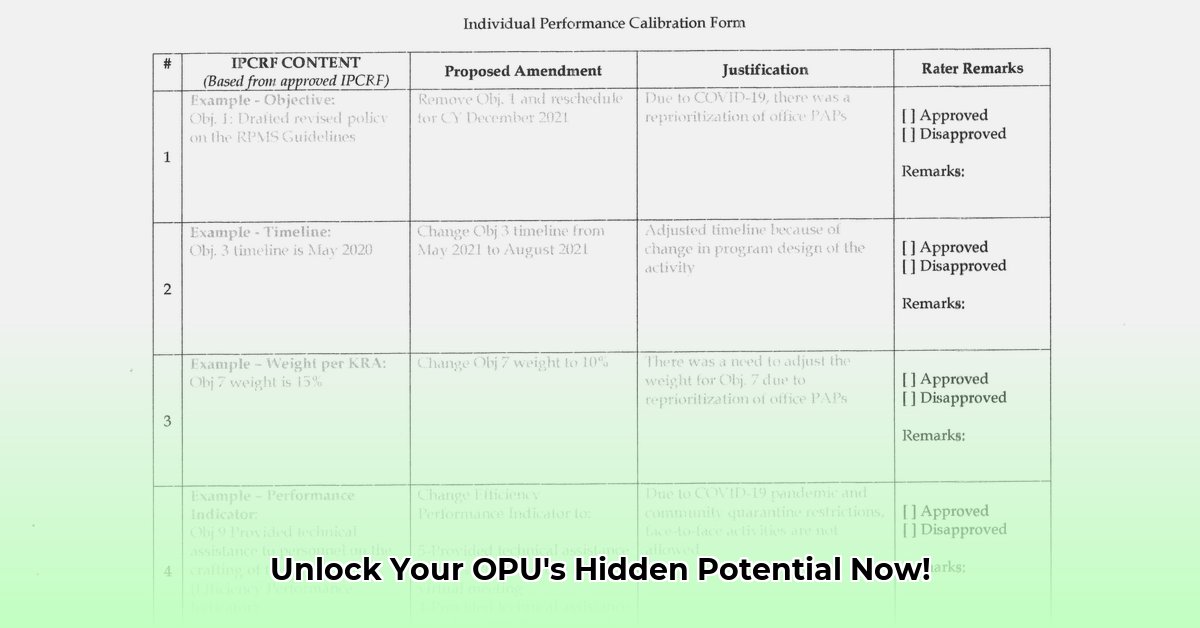
Understanding Your Target OPU Metrics
Want to know how you're performing in your Target Order Picking Unit (OPU) role? Many Target team members find it difficult to access their individual performance data. This guide will explain the key metrics and outline steps to gain access (even if the current system requires some advocacy). Understanding your metrics is the first step to improving your performance and contributing to a more efficient team.
Key Performance Indicators (KPIs) Explained
Before we look at how to find your numbers, let's understand what they mean. These metrics provide insights into your efficiency and accuracy:
Pick Rate: This measures how quickly and accurately you select items for customer orders. A higher pick rate indicates faster and more accurate order fulfillment. Think of it as items picked correctly per hour. (Target's exact calculation formula isn't publicly available, which is a point many employees feel needs addressing).
Pack Rate: This measures your speed and accuracy in preparing orders for shipment. Similar to pick rate, a higher pack rate signifies greater efficiency. (Again, the precise formula for calculation may not be readily known by all employees, highlighting an area for improved transparency).
INF (In-Flight) Percentage: This indicates the percentage of orders with issues (e.g., wrong items, missing items). A lower INF percentage reflects higher accuracy and fewer errors. (The specific definition of an "error" within the system is not consistently clear to all employees.)
The lack of readily available information about these metrics' calculation is a common challenge. Let's address how to navigate this situation.
Accessing Your OPU Performance Data: A Practical Guide
The current system for accessing individual OPU performance metrics isn't always intuitive. While Target likely tracks this data, direct employee access is often limited. However, there are proactive steps you can take:
Speak with Your Team Lead: Initiate a conversation with your supervisor. While you may not receive precise numerical data immediately, this opens a dialogue regarding your performance and underscores the importance of access to such information. Remember to phrase your request constructively, focusing on your desire to improve.
Advocate for System Improvements: Communicate your need for clear, easily accessible performance data to your management. The more employees who voice this concern, the greater the likelihood of positive change. Consider drafting a concise, well-reasoned proposal outlining the benefits of improved data access. Your voice matters!
Collaborate with Colleagues: Discuss your challenges and experiences with coworkers. Collective action and shared experiences can amplify your concerns and encourage a more unified approach to advocating for change.
Are there additional methods for gaining access to these metrics? Exploring internal resources and employee portals may uncover helpful information. However, given the current absence of a straightforward system, the aforementioned steps remain your most practical options for now.
Improving Target's Performance Data Systems: A Vision for the Future
Ideally, Target should implement the following improvements:
User-Friendly Dashboards: An easy-to-navigate online dashboard showing key metrics (pick rate, pack rate, INF percentage) would significantly improve transparency and employee empowerment. This would allow for quick and easy self-assessment and performance tracking.
Clear Metric Definitions: Comprehensive and easily understandable explanations of how each metric is calculated would eliminate ambiguity and empower employees to fully comprehend their performance.
Comprehensive Training and Support: Targeted training and resources would help employees understand and utilize their performance data for skill development and career growth. This would create a positive feedback loop, promoting improvement and a more engaged workforce.
By actively engaging with your supervisors, advocating for improved systems, and collaborating with colleagues, you can contribute to a more transparent and supportive work environment. Your performance matters, and you deserve easy access to the data that reflects your contributions.